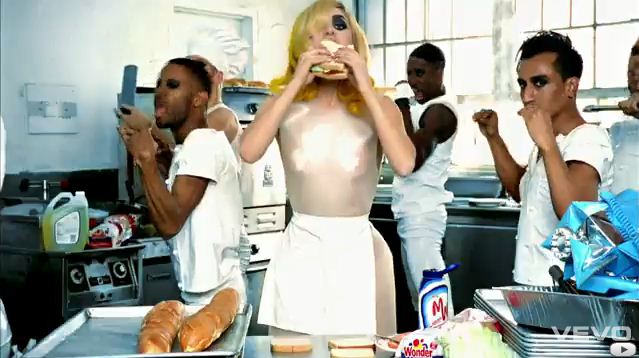“You might be too distracted to notice the first time through, but there is actually a lot of food imagery used in the Telephone music video.” And so, for the first time, I scrutinized a Lady Gaga video not for the outrageously skimpy outfits, but for the usage of food items. At the end of the ten minutes, our class was taken aback at the number of product placements in the film short. “It’s just a big ad for Virgin, Honey Buns and Polaroid, isn’t it?” The video makes frequent use of ersatz, convenience products like WonderBread and Miracle Whip. “Lady Gaga is well aware of her status as a highly commercial icon, and makes no pretense of acting otherwise. In a sense, she has tricked you into watching a 10-minute long ad masquerading as music video, one that you will now send to all your friends.” And what’s with the Diet Coke can hair rollers? In modern society, the panopticon of body image compels women to diet and lose weight, even without explicit pressure. She is trapped by both an interior and exterior prison.
Our professor was Fabio Parasecoli, from the department of nutrition, food studies and public health at NYU, and he deftly guided us through the semiotics of food symbolism and a post-structuralist analysis of consumer body image perceptions. Power relations are negotiated through the acceptance or refusal of food, and race and sex differences are mediated through cooking and eating food. Food embodies the person who prepared it, as seen in the rejection of the “AIDS Burger” in True Blood, and it can be used as cultural capital to differentiate yourself or elevate your social status. At the consumerist extreme, food is produced for a society of spectacle, with much of food programming on TV designed for people who will never pick up a knife or walk into a kitchen.
Continue reading Food in Pop Culture Through the Lens of Marshmallow Peeps
